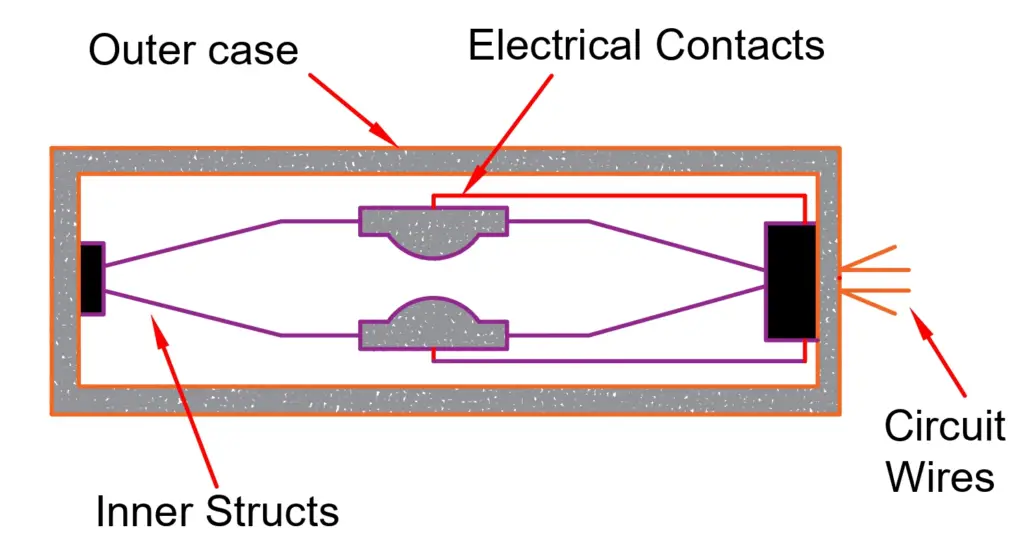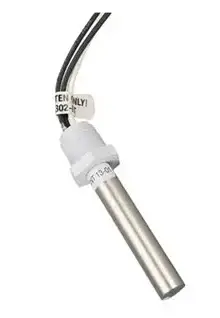Rate compensated heat detectors initiate an alarm when the surrounding air temperature reaches at a predefined level, irrespective of the rate of temperature rise.
Heat detectors are devices that are designed to sound an alarm (using associated components) when there is a change in temperature and/or the temperature in a room reaches a preset value. Heat detectors are of various types; one such type is a rate compensated heat detector.
What are Rate Compensated Heat Detectors?
The rate compensated heat detectors are designed to initiate an alarm when the temperature of the ambient air reaches a preset level. These heat detectors have the feature of compensating for the thermal lag that is present between the interior of the device and the room temperature.
Construction of Rate Compensated Heat Detectors
The rate compensated heat detectors have an outer metal tube that will expand at a fixed rate. When this tube expands to a certain distance, the contacts close and sound an alarm. For compensation for the expansion, the expansion is opposed by some metal devices. So, basically, there is an outer metal tube and within which is an inner metal tube that exerts counter force.
When the rate of rise in temperature is slow, the outer tube will expand, resulting in the contacts of the alarm getting closer. At this time, the inner metal device exerts a counterforce on the expansion of the outer tube. Because of this force, the contacts remain separated till the entire device gets heated to its rated temperature.
In cases where there is a rapid increase in the ambient temperature, the outer tube expands at a faster rate as compared to the inner metal piece. Hence, the inner metal piece is not able to compensate for the expansion resulting in the closure of the alarm contacts.

In rate compensated heat detectors, the thermal lag is compensated. These rate compensated heat detectors eliminate the thermal lag as observed in the fixed temperature detectors. They also eliminate the problem of false alarms and the risk of missing slow temperature heat-releasing combustion in the case of rate of rise heat detectors.
Advantages
- They respond accurately and positively to fire hazards.
- Eliminates false alarms.
- They are not affected by Dusty and dirty environments and their performance does not deter in such environment.
- They are often more reliable than smoke detectors.
- More cost-effective as compared to smoke detectors.
- Require very less maintenance
Disadvantages
- They respond at a slower rate as compared to smoke detectors.
- They are not able to detect the products of combustion.
- The rate compensated heat detectors can be used only to protect property.
Example of Rate Compensated Heat Detector- Honmeywell’s 302 Series
An example of the rate compensated heat detector is Honeywell’s 302 Series rate-anticipation heat detectors. The Honeywell’s 302 Series rate-anticipation heat detectors are designed in a way to operate within a controlled range of two to three degrees of their set points, irrespective of the rate of increase in the temperature of the room.
The Honeywell’s 302 Series rate-anticipation heat detectors are available in two ratings: 135°F (57.2°C) and 194°F (90°C). This Series 302 is specifically designed for fire detection and alarm system by Honeywell. The Honeywell’s 302 Series rate-anticipation heat detectors are normally open (NO) devices.
These respond and sound a fire alarm (with associated components) when the ambient temperature reaches the pre-set threshold temperature. When a rapid increase in temperature is seen, the rate anticipation feature of the detector enables it to respond 1-3° earlier.

These devices do not respond to momentary temperature fluctuations below the threshold level. So, the chances of a false alarm are minimal. When the temperature falls below the threshold level, it reset itself. The Honeywell’s 302 Series rate-anticipation heat detectors are suitable for use in all areas and any occupancy type. The Honeywell’s 302 Series rate-anticipation heat detectors are shock-resistant, corrosion-resistant, and tamper-proof.